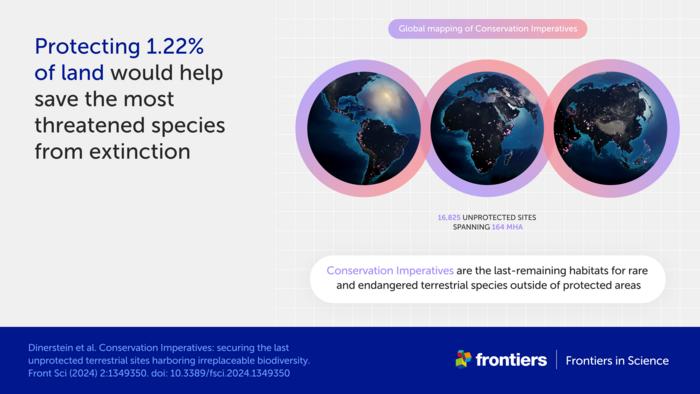A new study published in Frontiers in Science reveals a game-changing strategy to halt the ongoing mass extinction of Earth’s species. An international team of researchers has identified key areas covering just 1.22% of the planet’s land surface that, if protected, could prevent the loss of the world’s most threatened species.
This groundbreaking research offers a practical and affordable solution to one of the most pressing environmental challenges of our time. By focusing conservation efforts on these critical habitats, we may be able to safeguard Earth’s biodiversity for future generations.
Mapping Earth’s Biodiversity Hotspots
The research team, led by Dr. Eric Dinerstein of the NGO Resolve, combined six layers of global biodiversity data with maps of existing protected areas and satellite imagery. This comprehensive approach allowed them to identify 16,825 sites they call “Conservation Imperatives” – areas crucial for preserving rare and threatened species.
“Most species on Earth are rare, meaning that species either have very narrow ranges or they occur at very low densities or both,” explained Dinerstein. “And rarity is very concentrated. In our study, zooming in on this rarity, we found that we need only about 1.2% of the Earth’s surface to head off the sixth great extinction of life on Earth.”
These Conservation Imperatives are home to over 4,700 threatened species in some of the world’s most biodiverse yet imperiled ecosystems. Andy Lee, a coauthor from Resolve, noted that these areas protect not only large mammals and birds but also “range-restricted amphibians and rare plant species.”
The Cost of Conservation and Its Global Impact
To make their proposal actionable, the researchers estimated the cost of protecting these critical areas. Their analysis suggests that safeguarding the Conservation Imperatives in the tropics would cost approximately $34 billion per year over the next five years.
While this figure may seem substantial, Lee put it into perspective: “This represents less than 0.2% of the United States’ GDP, less than 9% of the annual subsidies benefiting the global fossil fuel industry, and a fraction of the revenue generated from the mining and agroforestry industries each year.”
The benefits of this investment extend beyond biodiversity conservation. Preserving these areas, many of which are forested, would also help combat climate change by protecting natural carbon sinks. This dual benefit underscores the interconnectedness of biodiversity and climate crises.
The researchers emphasize that while identifying and protecting these areas is crucial, it’s only the first step. Additional measures, such as preventing poaching, will be necessary to ensure long-term conservation success.
Dinerstein concluded with a call to action: “What will we bequeath to future generations? A healthy, vibrant Earth is critical for us to pass on. So we’ve got to get going. We’ve got to head off the extinction crisis. Conservation Imperatives drive us to do that.”
As the world grapples with unprecedented environmental challenges, this research offers a ray of hope. By focusing on these key areas, we have a chance to preserve Earth’s incredible biodiversity and secure a more sustainable future for all life on our planet.
If our reporting has informed or inspired you, please consider making a donation. Every contribution, no matter the size, empowers us to continue delivering accurate, engaging, and trustworthy science and medical news. Independent journalism requires time, effort, and resources—your support ensures we can keep uncovering the stories that matter most to you.
Join us in making knowledge accessible and impactful. Thank you for standing with us!

